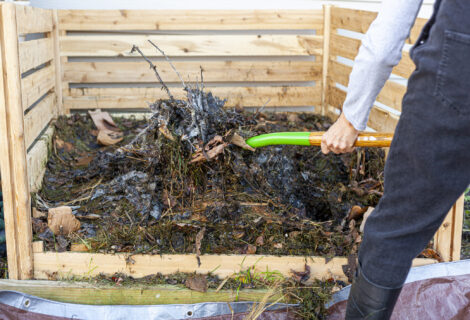https://www.pexels.com/photo/squirrel-eating-cone-in-forest-8797307/
Animals are an essential part of the planet’s biodiversity and it is important to understand their habitats. But what does animal habitat actually mean? In this article, you’ll discover eight facts about animal habitats that you need to know. From understanding the different types of habitats to learning how human activity affects them, this knowledge will help you better appreciate and protect these vital ecosystems. Here are eight facts that you need to know about animal habitats.
1. Animals live in a variety of habitats
From forests and grasslands to deserts and waterways, a wide range of habitats exists for animals. Each species is adapted to living in its own particular habitat, so it’s important not to disrupt these delicate ecosystems by introducing new species or removing native ones. Additionally, animal habitats are not static and may change over time due to natural processes or human activity. While some species may be able to adapt to new habitats, others cannot.
2. Human activity can destroy or degrade animal habitats
Human activity can cause the destruction of habitats through deforestation, mining, and other activities. In addition, human activities such as pollution and climate change can degrade animal habitats by altering the environment and making it unsuitable for wildlife. For instance, when water quality is too low or air quality is contaminated with pollutants animals may no longer be able to inhabit their original habitat. It’s important to understand that human activity has a direct effect on animal habitats so people should take steps to minimize their impact on the environment.
3. Different types of habitats have different characteristics
When it comes to animal domains, there are a few key elements that define them. First of all, different kinds of habitats will have varying climates and landscapes – a desert is going to be much different than rainforests, and so on. They can also differ in terms of shelter opportunities for the animals who inhabit them and resources like food availability, predators, water sources, and more. Furthermore, some habitats are much smaller than others, consisting of only a small area or body of water while others may span hundreds or thousands of miles. Lastly, an animal’s habitat can range from very permanent environments such as on land to highly temporary ones like those found in the ocean.
4. Animals need specific habitats to survive
Different animals survive in different habitats, so it’s important to understand the needs of a specific animal before deciding where to place them. For example, cats prefer warm places with plenty of hiding spots, while fish need access to an abundance of water. Knowing the specifics of an animal’s habitat can help you keep them safe and comfortable. Additionally, animals in their natural habitat are not exposed to any harm from humans, which keeps them safe and healthy. While it can sometimes be tempting to take animals out of their natural habitat, it’s important to remember that they may not survive without a suitable environment.
5. Several species of animals live in animal habitats, not just one
It’s important to keep in mind that many different species call their habitat their home. Whether it’s a forest, desert, or mountain range—each contains its own unique set of plants and animals. It is also essential to realize that the different habitats are all interconnected and depend on each other in some way. For example, an aquatic ecosystem may rely on the rainforest for nutrients or shelter from storms. Also, many species that rely on a particular habitat may move around between different habitats based on their seasonal needs. This is why it’s important to protect these habitats and the animals that live in them.
6. Food Chains are important
An integral part of life is the food chain. When one species is taken away, the entire system can be thrown into disarray. Every animal plays a role in some way: predators help keep prey populations at manageable levels; foliage-eaters give plants the opportunity to regenerate and reproduce; pollinators move nutrients around different parts of ecosystems; scavengers clean up the decaying matter and recycle nutrients back into the soil. All these roles form a complex web that helps keep an area healthy and balanced. In addition, animals provide humans with a number of resources such as fur, traditional medicine ingredients, honey, seafood, etc., all of which depend on their natural habitats for survival.
7. Animal environments change frequently
It’s no secret that animal surroundings are constantly changing. In the past few decades, humans have had a significant effect on our planet and its ecosystems. From deforestation to climate change, human activity is disrupting natural habitats at an unprecedented rate. As a result, animals are being forced to adapt or move to other areas in order to survive. What this means is that animals must be able to quickly adjust to new environments and conditions if they’re going to continue living in their current habitat. To do so, they need plenty of suitable food sources and water as well as protection from predators and extreme weather events.
8. Environments can be restored to their original state when human activity damages them
In some cases, this restoration is relatively easy and straightforward; in others, it’s a more complex process that requires effort and resources. However, with the right tools and techniques, it is possible to restore damaged habitats back to their natural glory. This allows animals to continue living in their habitats without having to move away or compete with other species for resources. It also serves as an invaluable reminder of how important protecting our environment really is!
https://www.pexels.com/photo/split-shot-photo-of-dolphins-undewater-2922672/
Protecting animal habitats is essential to preserving biodiversity and keeping our ecosystems healthy. Knowing the details of an animal’s habitat, recognizing how interconnected different habitats are, understanding the effects of human activity on the environment, and being aware of the potential for restoring damaged areas are all great ways to support animals in their natural homes. Together, we can ensure that animals have the chance to thrive in their habitats for generations to come!








